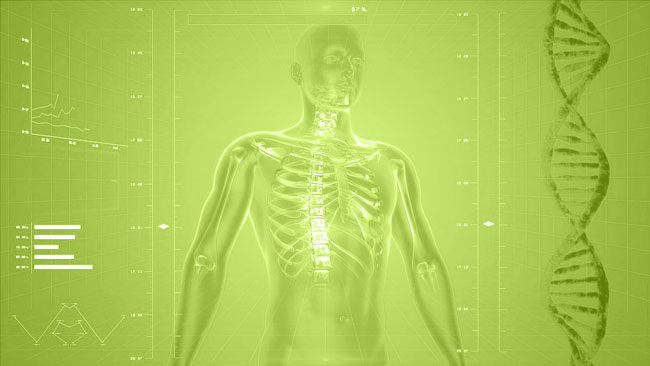
Disc injuries are one of the most debilitating types of back injuries you can experience, and there is little to no way to prevent them, other than being cautious. But sometimes it’s hard to tell whether you’re just experiencing common lower back pain, or an actual slipped disc. Disc injuries can be incredibly painful and cause serious damage to your spine or neck if left untreated, so here are a few ways to determine whether or not this is what you’re suffering from.

What causes slipped or herniated discs?
A slipped disk happens when the outer ring of the disc in your veterbrae becomes weak or torn and allows the inner portion to slip out. This is particularly common when you get older. In fact, people between 35-45 years old are more likely to suffer from a slipped disc injury as disks begin to lose some of their protective water content as we age. Certain movements may also cause a disk to slip out of place, especially if you are twisting or turning to lift an object. As you’re probably aware, lifting large, heavy objects can place great strain on your lower back, so if you have a very physically demanding job that requires a lot of lifting, you may be at increased risk for this kind of injury. Overweight people also run an increased risk for a herniated disk, because their spines must support their extra weight. Other contributing factors include: weak muscles and a sedentary lifestyle.
What are the symptoms of a slipped disc injury?
Slipped disks can happen in any part of your spine, from your neck to your lower back. However, the lower back is where slipped disks commonly take place. Since your spinal column is a complex network of nerves and blood vessels, a herniated disk might place extra pressure on the nerves and muscles around it, and potentially cause nerve damage if left untreated.
See a doctor immediately if you are experiencing these types back pain with any of these symptoms:
- Pain and numbness, most commonly on one side of the body
- Pain that extends to your arms and/or legs
- Pain that worsens at night
- Pain that worsens after standing or sitting
- Pain when walking short distances
- Unexplained muscle weakness
- Tingling, aching, or burning sensations in the affected area
How can I prevent having a slipped disc?
While there is no sure way to prevent a slipped disc, being careful and living a healthy lifestyle are an important part of keeping your spine strong and healthy. Here are a few ways you can do that.
- Try and stay at a healthy weight through diet, activity and exercise.
- Be careful when moving heavy objects, always making sure to use safe lifting techniques: Bend and lift from your knees, not your waist.
- Do not stay seated for extended periods; get up and stretch periodically.
- Do exercises to strengthen the muscles in your back, legs, and abdomen.
- Go for regular chiropractic adjustments to keep your spine in shape.
Request Appointment
Get Directions!
Hours
| Monday | 9:00 am – 6:00 pm |
|---|---|
| Tuesday | 9:00 am – 6:00 pm |
| Wednesday | 9:00 am – 6:00 pm |
| Thursday | 9:00 am – 6:00 pm |
| Friday | 9:00 am – 6:00 pm |
| Saturday | Closed |
| Sunday | Closed |
Areas We Serve
Portland Chiropractic Office: Located in the East Portland/Gresham area means our offices are easily accessible from I-205 and I-84 for your convenience. Our Portland chiropractic offices are conveniently located in Portland near Gresham. Our service area includes Portland, Gresham, Troutdale, Parkrose, Mount Tabor, Mill Park, Wood Village, Fairview, Clackamas, Rockwood and the rest of the Portland Metro Area including Vancouver, Washington. If you're in the area, just search "Chiropractors Near Me" and you'll find us.